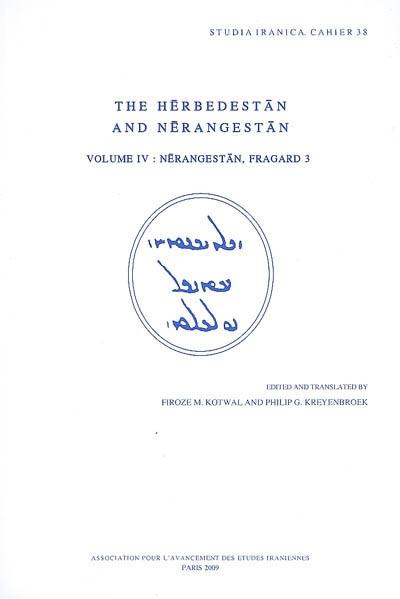
Fiche technique
Format : Broché
Nb de pages : 125 pages
Poids : 310 g
Dimensions : 18cm X 26cm
ISBN : 978-2-910640-24-8
EAN : 9782910640248
Nerangestan, Fragard 3
Quatrième de couverture
Le N(...)rangest(...)n, ou « Livre d'indications rituelles », vient, dans les manuscrits, à la suite du H(...)rbedest(...)n mais représente un texte à part qui a essentiellement trait à l'éducation religieuse. Les deux textes appartiennent à la tradition savante du Zoroastrisme, et les longs passages du commentaire pehlevi sont souvent plus éclairants que le sont les phrases laconiques en avestique. Toujours est il que peu de passages sont faciles à lire parce que la plupart des iranistes occidentaux ont une connaissance peu approfondie des différents rituels zoroastriens, tandis que l'objectif du N(...)rangest(...)n était d'élucider des points qui semblaient obscurs même aux prêtres pratiquants de l'époque. Le deuxième Fragard du N(...)rangest(...)n est fondé sur l'enseignement de S(...)ns, mais n'a probablement été consigné dans sa forme actuelle que plusieurs générations après ce grand commentateur. C'est de loin le chapitre le plus long du texte, et la richesse d'informations qu'il contient procure de nouveaux aperçus dans différents aspects de la vie religieuse et rituelle de la communauté zoroastrienne.
The N(...)rangest(...)n, the " Book of Ritual Directions ", follows the H(...)rbedest(...)n in the manuscripts but is in fact a separate text, dealing with matters of ritual where the H(...)rbedest(...)n is mainly concerned with religious education. Both texts belong to the learned tradition of Zoroastrianism, and the lengthy passages of Pahlavi commentary are often more illuminating than the terse Avestan sentences. Still, few parts of the text make easy reading ; most Western Iranists have at best a passing acquaintance with the various Zoroastrian rituals, while the N(...)rangest(...)n was intended to elucidate points which seemed obscure even to the practising priests of its time. The Second Fragard of the N(...)rangest(...)n is based on the Teachings of S(...)ns, but was probably written down in its present form several generations after this great Commentator. It is by far the longest extant chapter of the text, and the wealth of information it contains affords new insights into several aspects of the religious and ritual life of the Zoroastrian community.





